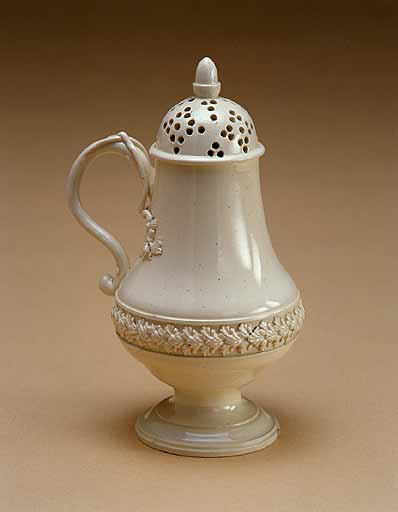sugar castor
Summary
Public: Pear shaped sugar castor, with loop handle and applied relief flowers and acanthus border, plain cream coloured earthenware. Private: Pear-shaped sugar castor on turned spreading foot, plain loop handle with spur at lower terminal and two applied tendrils to upper section terminating in applied relief flowers on castor body. Applied relief acanthus border around belly of castor. Domed top with diamond arrangement of pierced holes, surmounted by acorn finial. Cream coloured body with yellowish glaze.
Display Label
Sugar castor Probably made in Staffordshire 1780-1800 Cream coloured earthenware, with relief-moulded and pierced decoration This pretty sugar shaker was the height of fashion during the heyday of the transatlantic slave trade. Alongside its connection with slave-grown sugar, it also has a ‘hidden history’ to reveal. The castor was donated to Manchester City Galleries by Thomas Tylston Greg in the 1920s. Greg’s grandfather Samuel set up Quarry Bank Mill, a successful cotton spinning mill in Cheshire. The Greg family also owned businesses in Dominica, where they made their fortune using slave labour on their two sugar cane plantations. They also sent cloth produced at Quarry Bank Mill to clothe their enslaved African workers. Thomas Greg bequest 1923.836
Object Name
sugar castor
Date Created
1780=1800 (circa)
Dimensions
(104mm): 104mm
(154mm): 154mm
(77mm): 77mm
accession number
1923.836
Collection Group
Place of creation
Staffordshire
Medium
On Display
[G19] Manchester Art Gallery - Gallery 19 (Design Gallery)
View all
Credit
Bequeathed by Thomas Tylston Greg
Legal
© Manchester Art Gallery

